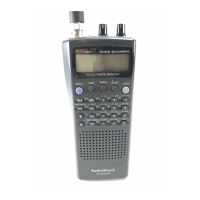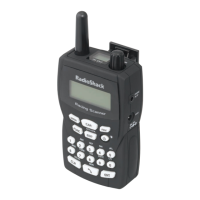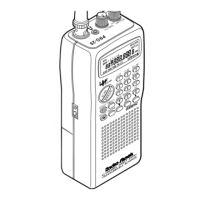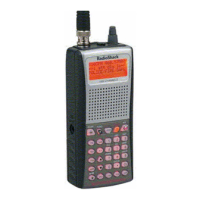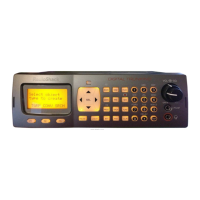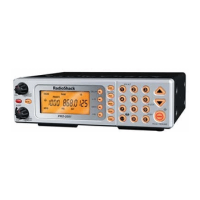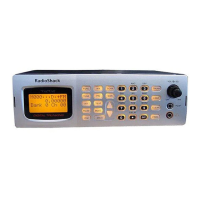14
Operation
ˆ
Operation
TURNING ON THE
SCANNER/SETTING
VOLUME AND SQUELCH
1. Turn
SQUELCH
fully counterclockwise
until the indicator points to
MIN
.
2. Slide
POWER
to
ON
to turn on the
scanner.
3. Turn
VOLUME
clockwise until you hear a
hissing sound.
4. Turn
SQUELCH
clockwise, just until the
hissing sound stops.
Notes:
• To listen to a weak or distant station,
turn
SQUELCH
counterclockwise. If
reception is poor, turn
SQUELCH
clockwise to cut out weak
transmissions.
•If
SQUELCH
is adjusted so you always
hear a hissing sound, the scanner
does not scan or search properly.
5. To turn off the scanner when you finish,
slide
POWER
to
OFF
.
STORING KNOWN
FREQUENCIES INTO
CHANNELS
Good references for active frequencies are
the RadioShack
Police Call
,
Aeronautical
Frequency Directory
, and
Maritime
Frequency Directory
. We update these
directories every year, so be sure to get a
current copy.
Follow these steps to store frequencies into
channels.
1. Press
PGM
, enter the channel number
(1–200) where you want to store a
frequency, then press
PGM
again. The
channel number appears.
2. Use the number keys and • to enter the
frequency (including the decimal point)
you want to store.
3. Press
ENTER
to store the frequency into
the channel.
Notes
:
• If you made a mistake in Step 2,
Error
appears and the scanner
beeps when you press
ENTER
.
Simply start again from Step 2.
• Your scanner automatically rounds
the entered frequency down to the
closest valid frequency. For example,
if you enter a frequency for 151.473,
your scanner accepts it as 151.470.
• If you entered a frequency that is
already stored in another channel,
the scanner beeps three times and
displays the lowest channel number
where the frequency is already
stored, and
-dUPL-
then the
frequency flashes. If you want to
store the frequency anyway, press
ENTER
again. Press
MON/CL
to clear
the frequency.
• Press
DELAY
if you want the scanner
to pause 2 seconds on this channel
after a transmission ends before it
proceeds to the next channel (see
“Using the Delay Function” on
Page 20). The scanner also stores
this setting in the channel.

